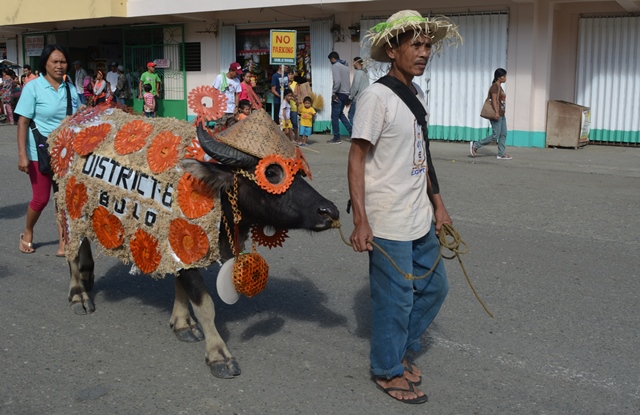A festival dedicated principally to bamboo and its many uses, TULTUGAN FESTIVAL is celebrated every year end in the town of Maasin, Iloilo.
The festival performances usually depicting the local culture is a perfect platform to display new creative ways of utilizing bamboo, a widely available material that has been used for centuries in the archipelago, into modern-looking and aesthetically appealing functional products. Different approaches are applied to the transformation and development of various bamboo-based products incorporated in the presentation.
The festival costume, prop and musical instruments are all made of or at least inspired by bamboo and it is the municipality’s way of keeping various valuable traditions alive by connecting them to the festival to ensure and safeguard its sustainability for future generations.
In addition to seeing and hearing unique dance and music performances, attendees will be able to engage in activities such as the daily food festival and the coronation of Tultugan Festival Queen.
Tultugan is a native bamboo percussion instrument used by natives of long ago as a tool for communication and as a musical instrument. Tultugan is a root word of tultug which has been defined as an action verbalizing the act of playing sound on bamboo. Usually this is rendered through a bamboo stick striking it against the body of the bamboo, thus becoming a rhythmic instrument called Tultugan.
Tultugan festival aims to promote its local bamboo industry highlighting its significance and importance in the lives of the people in the community. It also showcases Maasin’s rich natural environment with spectacular bamboo landscapes for people to get to know its main local industry and local artisans. The festivity also promotes its various natural products and social enterprises that protect and promote some of its best assets: natural landscapes and traditional skills.
The town of Maasin has long been known as the center of bamboo in Iloilo. Situated almost 26 kilometers west central from the city center, the place has been a major supplier of bamboo and its various handicrafts for local demand, in fact, some of the items are exported internationally.
The local government unit headed by the very dynamic mayor, Hon. Mariano M. Malones, teachers and local artists have the big challenge and vital role of assisting the transformation of traditions
Known as some of the fastest-growing plants in the world, the bamboo is a kind of grass. It is commonly known as woody grass and can be harvested after three years. There are about 1,200 bamboo species.
Bamboo has many uses. Many Filipino uses bamboo as material for house building, decorations, baskets, furniture, toothpicks, lampshades, fruit tray, flower vases, “kisame,” placemat and many more.
Iloilo is positioned to be center of bamboo production in the Philippines with an abundant supply of bamboo poles, mostly the variety of Kawayan tinik. More than 2 million poles produced yearly.
Maasin is a 3rd Class municipality belonging to the 3rd Congressional District of the province. Comprised of 50 barangays over its 17,110 hectare land area, the town borders the Municipality of Janiuay in the northeast; the Municipality of Cabatuan in the east, in the south by the Municipality of Alimodian and in the northwestern by the mountain ranges of the Province of Antique.
To get to Maasin, one can take a jeepney ride at the Transport Terminal in front of Christ the King Memorial Park in Jaro, Iloilo City. For more information, please contact Jestine Casio – Municipal Tourism Officer at (033) 3330299 or email at tultugan@yahoo.com
----------------------------
Reposted with permission from Mr Gilbert "Bombette" Marin, Iloilo Provincial Tourism Officer
Link to Original Blogpost >>> Safeguarding Local Traditions Through Tultugan







